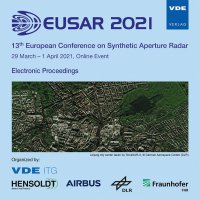A new decomposition of compound polarimetric targets
Conference: EUSAR 2021 - 13th European Conference on Synthetic Aperture Radar
03/29/2021 - 04/01/2021 at online
Proceedings: EUSAR 2021
Pages: 6Language: englishTyp: PDF
Authors:
Marino, Armando (The University of Stirling, Natural Sciences, Stirling, Scotland, UK)
Abstract:
The use of polarimetric Synthetic Aperture Radar (PolSAR) has the capability to improve detection and bio-physical parameters extraction in many remote sensing applications compared to the use of a single polarisation channel. The scattering matrix or the scattering vector allow to analyse the polarimetric information of targets. Unfortunately, when dealing with distributed targets, speckle introduces a statistical variation on the visible polarimetric behaviour and we need statistical tools. Generally the adopted solution is to extract second order statistics building a covariance matrix. Unfortunately, the covariance matrix formation as an averaged outer product of scattering vectors by themselves impose constraints on the power distribution in the polarimetric space (this is the shape of the surface drawn by the quadratic forms). The surface is forced to be an ellipsoid. In this work we show how such forcing can produces a loss of information. We propose an alternative way to decompose the partial target into a sum of low entropy components which does not require indiscriminate pre-averaging. To demonstrate its usefulness we use both Monte Carlo simulations and real quad-pol data. We compare the results of the proposed decomposition with the ones obtained by the Cloude-Pottier decomposition and show how the use of indiscriminate averaging can produce bias in the retrieval of the original scattering mechanisms.


